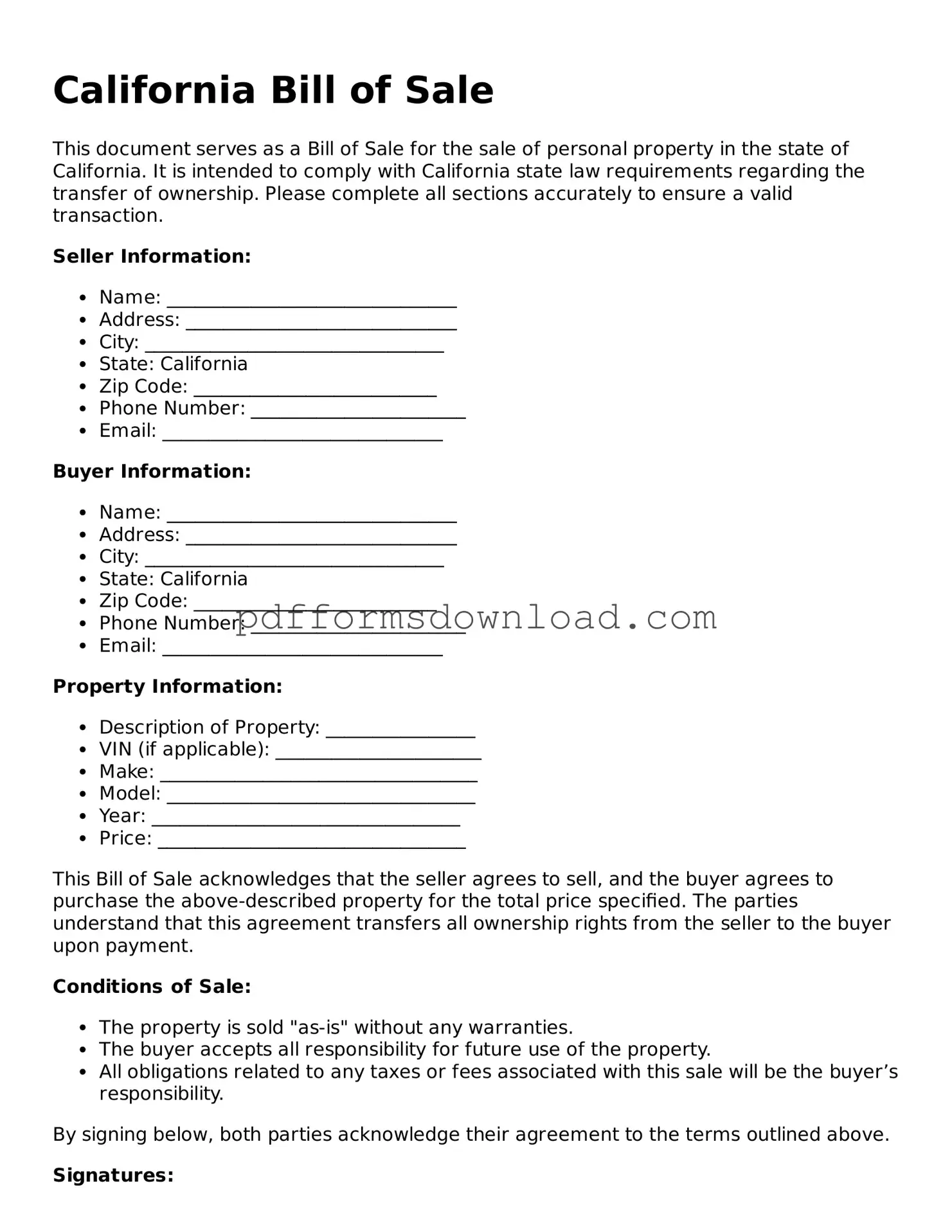What is a California Bill of Sale form?
A California Bill of Sale form is a legal document that records the transfer of ownership of personal property from one party to another. This form is commonly used for transactions involving vehicles, boats, and other valuable items. It serves as proof of the sale and includes important details such as the names of the buyer and seller, a description of the item, the sale price, and the date of the transaction.
Is a Bill of Sale required in California?
While a Bill of Sale is not legally required for all transactions in California, it is highly recommended, especially for significant purchases like vehicles. Having a Bill of Sale protects both the buyer and seller by providing a written record of the transaction. In some cases, such as vehicle sales, the Department of Motor Vehicles (DMV) may require a Bill of Sale for registration purposes.
What information should be included in a California Bill of Sale?
A comprehensive California Bill of Sale should include the following information: the full names and addresses of both the buyer and seller, a detailed description of the item being sold (including make, model, year, and VIN for vehicles), the sale price, the date of the transaction, and any warranties or conditions of the sale. Both parties should sign the document to validate the transaction.
Can I create my own Bill of Sale form?
Yes, you can create your own Bill of Sale form in California. However, it’s essential to ensure that it includes all necessary information and complies with state requirements. Many templates are available online that can guide you in drafting a proper Bill of Sale. Alternatively, you may choose to use a pre-made form to ensure all legal aspects are covered.
